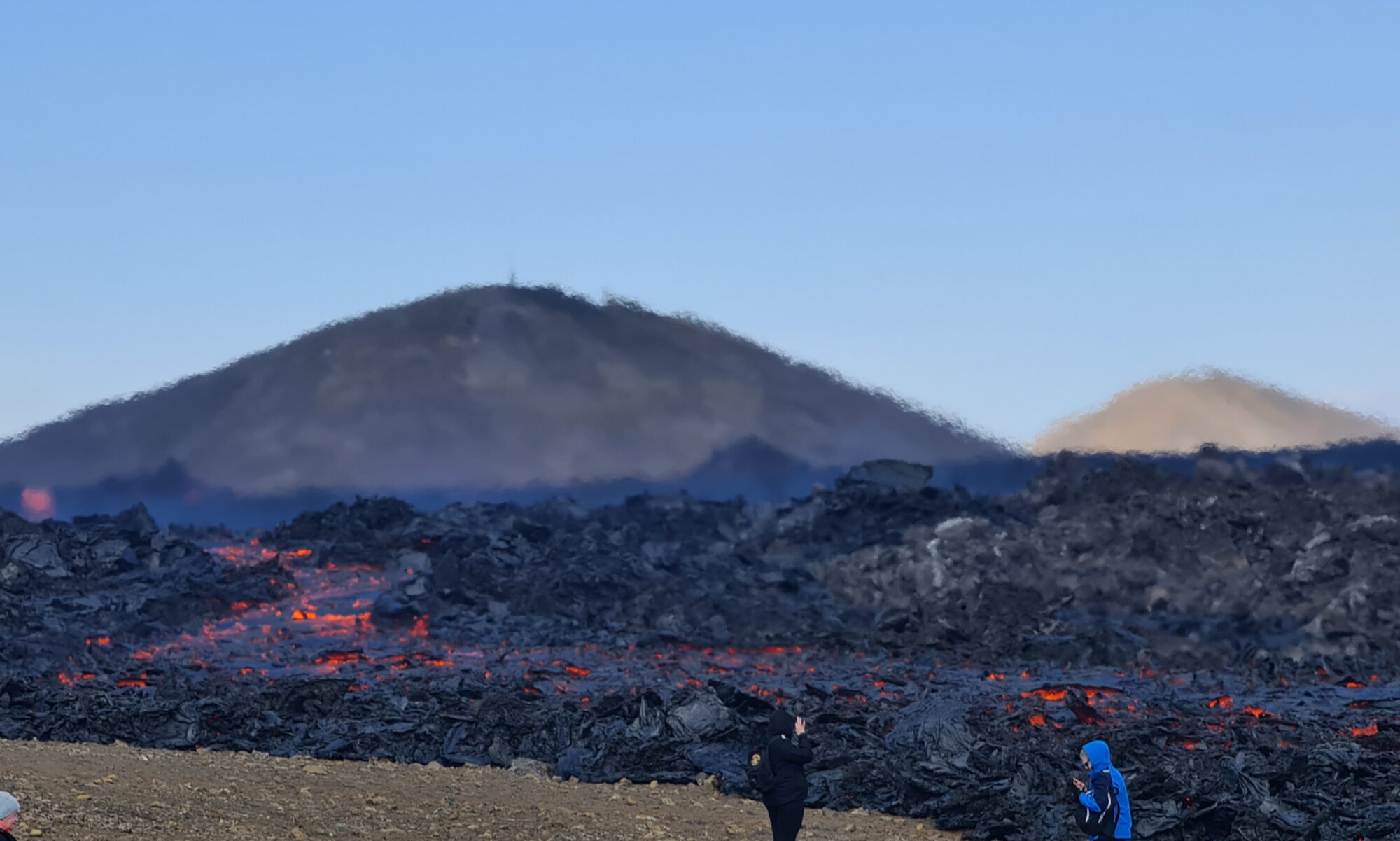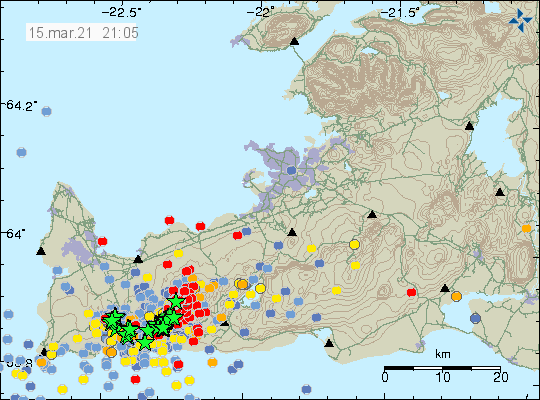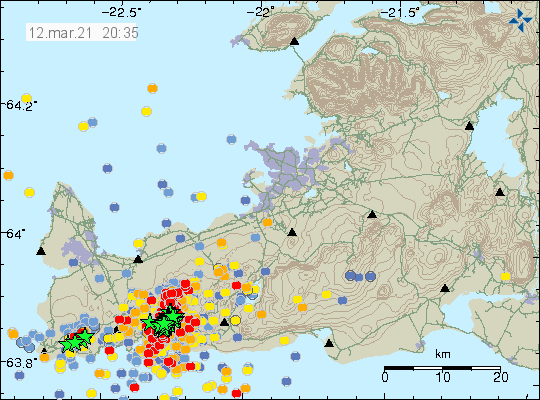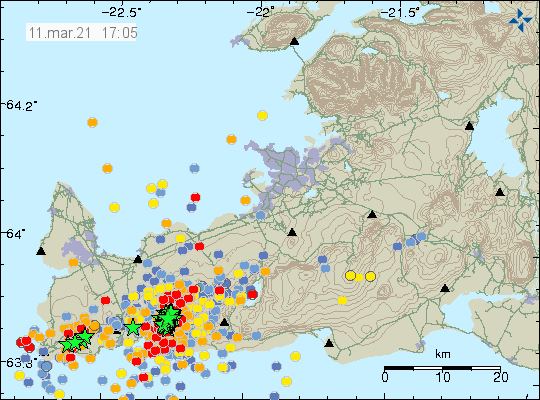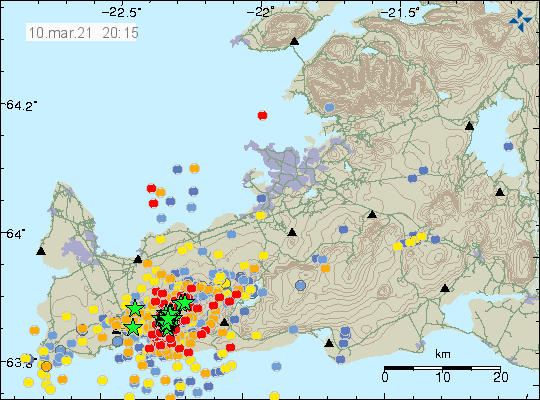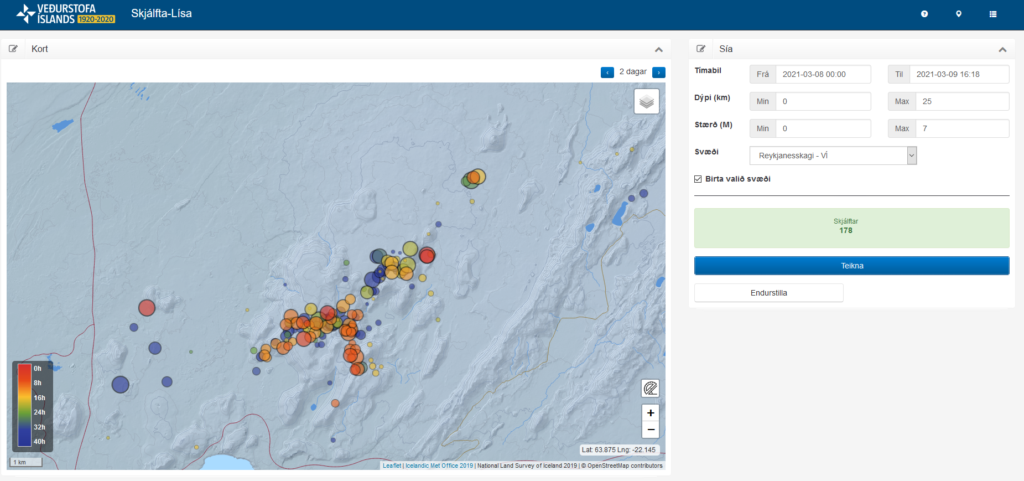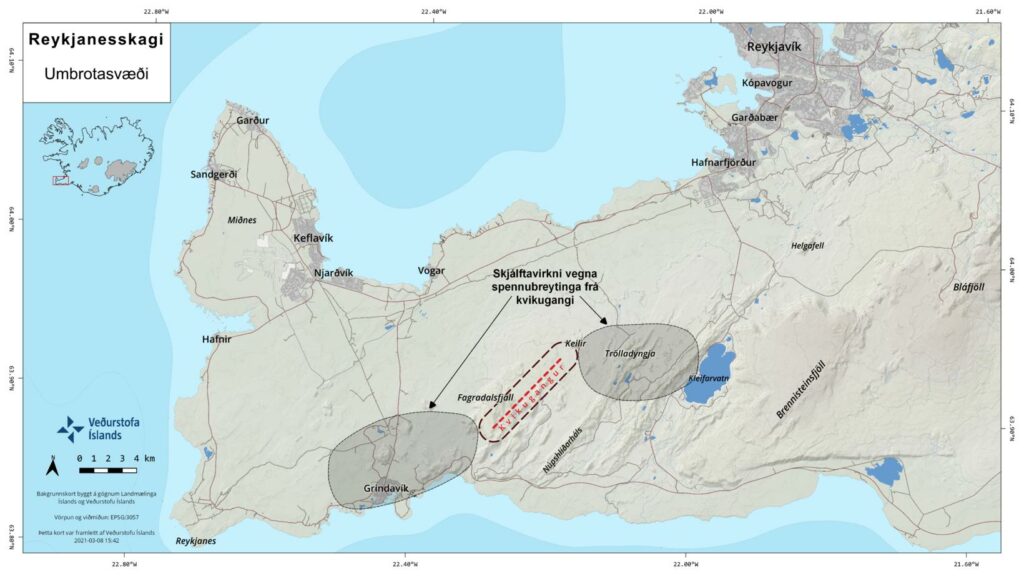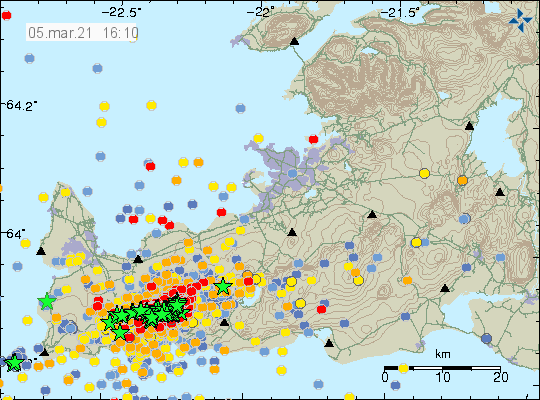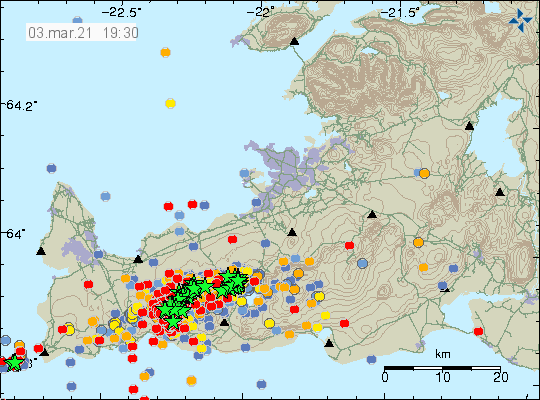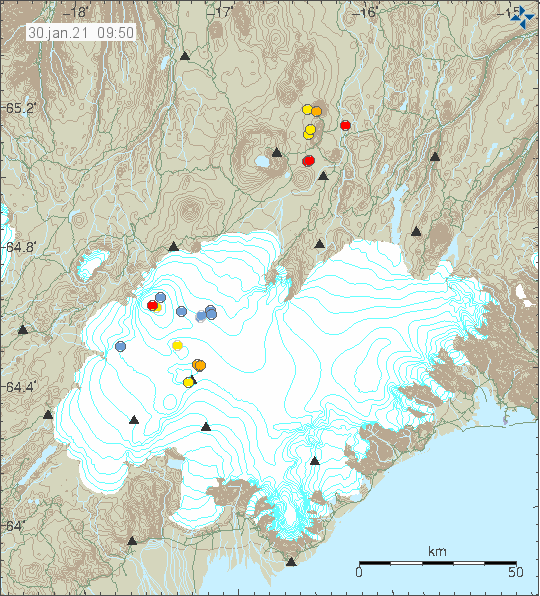This is a short article written on 17-March-2021 at 17:49 UTC. The situation can change without warning.
It has been less activity in in Fagradalsfjall volcano (Krýsuvík volcano). Current day to day change is not a lot at the writing of this article but it is also possible that bad weather that is now passing over Iceland is masking some of the smaller earthquakes in the dyke between Keilir mountain and Fagradalsfjall mountain. Inflation continues at what seems to be about the same rate as yesterday (16-March-2021).

Number of strong earthquakes has dropped after the strong earthquake activity during last weekend (12 to 14 March). What also changed is that the dyke can’t move more south then it already has. It seems that it hit a impasse in the crust that it was unable to break or go around (harder crust is the most common why this happens). The current status is a waiting for the eruption to start and when that happens is impossible to know.
Since there is not a lot of change going on at the writing of this article I am going to slow down the number of updates I am posting. Next update is going to be when something happens or at the latest Monday 22-March 2021.
Web cameras
Beint vefstreymi af skjálftasvæðinu – Borgarfjall (Rúv.is) If an eruption happens it might be visible here – This web camera no longer works.
Beint vefstreymi af skjálftasvæðinu – Efstaleiti – This web camera no longer works.
Road camera 1
Road camera 2 (night vision/infrared)
Live from Iceland – Keilir – This web camera is working (I think).
Donations
Please remember to support my work if you can. Donations help me staying away from always being broke. Thanks for the support. 🙂
Article updated on 18-March-2021 at 20:07. Web camera updates.
